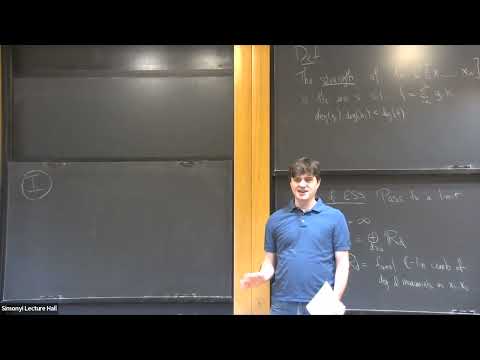Abstract
Let V be a complex vector space and consider symmetric d-linear forms on V, i.e., linear maps Symd(V)→>C. When V is finite dimensional and d>2, the structure of such forms is very complicated. Somewhat surprisingly, when V has countably infinite dimension there is much more order. For instance, there is a unique isomorphism class of form that is ultrahomogeneous (joint work with N. Harman), and (at least for d=3) it is possible to classify forms up to a notion of isogeny (joint work with A. Danelon). This circle of ideas is closely related to the notion of strength of polynomials, and also to the geometry of polynomial representations.
